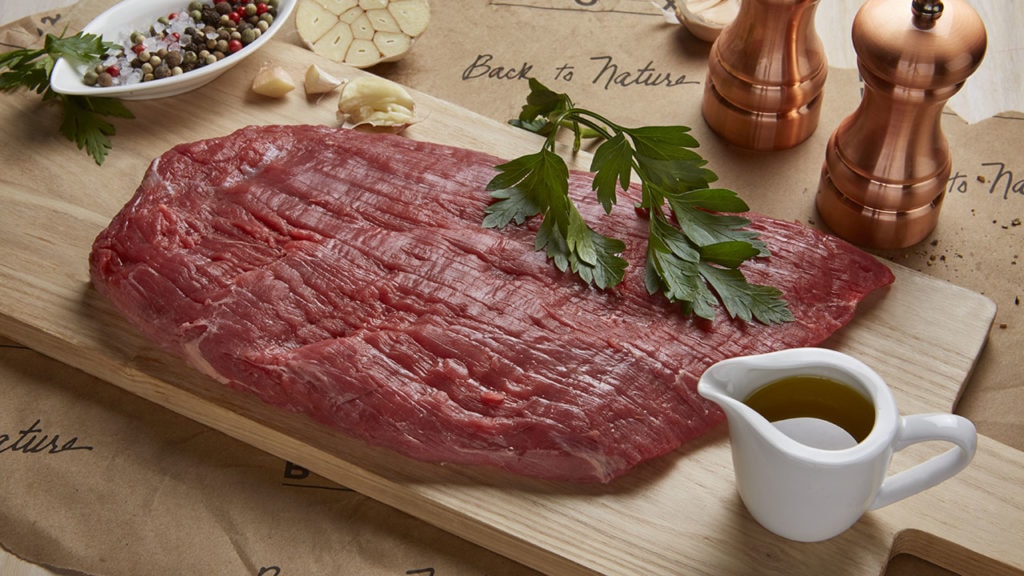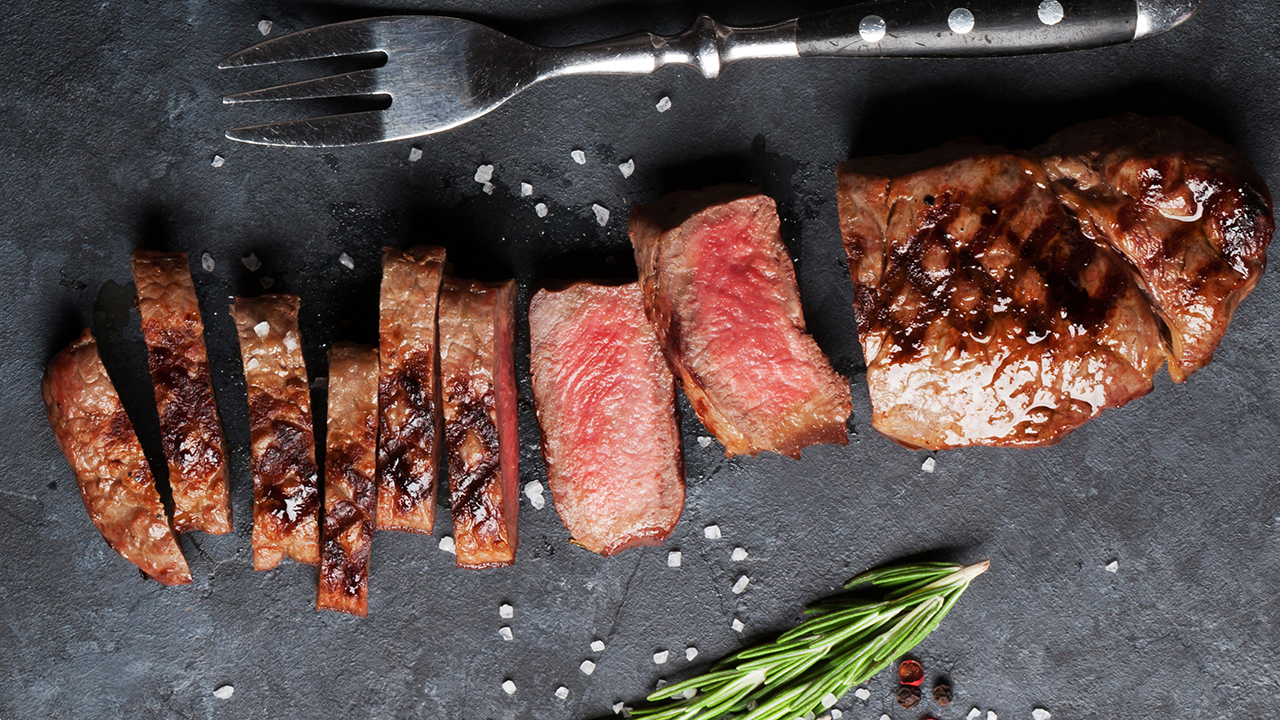Last Updated on January 15, 2024
There’s nothing better than cooking a great steak and enjoying it with friends and loved ones.
And there’s nothing worse than putting in all the effort to cook and then making a simple mistake that ruins it: Cutting the steak the wrong way.
How you slice it can mean the difference between enjoying a melt-in-your-mouth steak and chewing something akin to a rubber boot.
That’s why every good steak recipe advises you to cook to your preferred level of doneness, allow the meat to rest, and then slice against the grain.
What’s the grain?
The “grain” of a steak refers to the direction that the muscle fibers run. If you look at a raw steak close up, you can see the lines of the fibers; that’s the grain. No matter what steak you’re working with, it is crucial to slice against that grain.
If you’re uncertain, pick up a skirt, flank or hanger steak—these have more pronounced long muscle fibers because they come from parts of the cattle where the muscles work harder. When you look at one of these steaks, you can’t miss the grain. That’s a good way to familiarize yourself.
Cutting against the grain breaks up the muscle fibers, making the steak much more tender. Cutting with the grain leaves those long muscle fibers intact, and the steak will be unpleasantly tough.
Cutting grass-fed steak
It’s even more important to cut against the grain with grass-fed beef.
“Grass-fed, grass-finished cuts of beef will be significantly less forgiving to an improper cut,” says ButcherBox Chef Yankel Polak. “It’s leaner, to begin with, and the cows have lived more active lives. Their muscles will be more developed than grain-fed cows, who spend a significant portion of their lives cooped up in a feedlot.”
Not only is cutting against the grain crucial, the thickness of the slices is important as well. “Considering that the muscle fibers run parallel to each other, cutting thick slices against the grain still leaves a significant amount of tough muscle to chew through,” Chef Yankel says. “Keep the slices as thin as possible.”
Use the best knife for the job
The best knife for slicing a steak is a flat blade, a chef’s knife, or a slicer. “At least double the length of the width of the surface area of the meat,” is Chef Yankel’s rule.
“This will allow you a smooth motion while slicing,” he says. “Don’t press down hard or struggle with the meat. Using a sharp knife, draw the blade smoothly across the surface. Allow the knife to do the work; slicing against the grain should not be hard work.”




